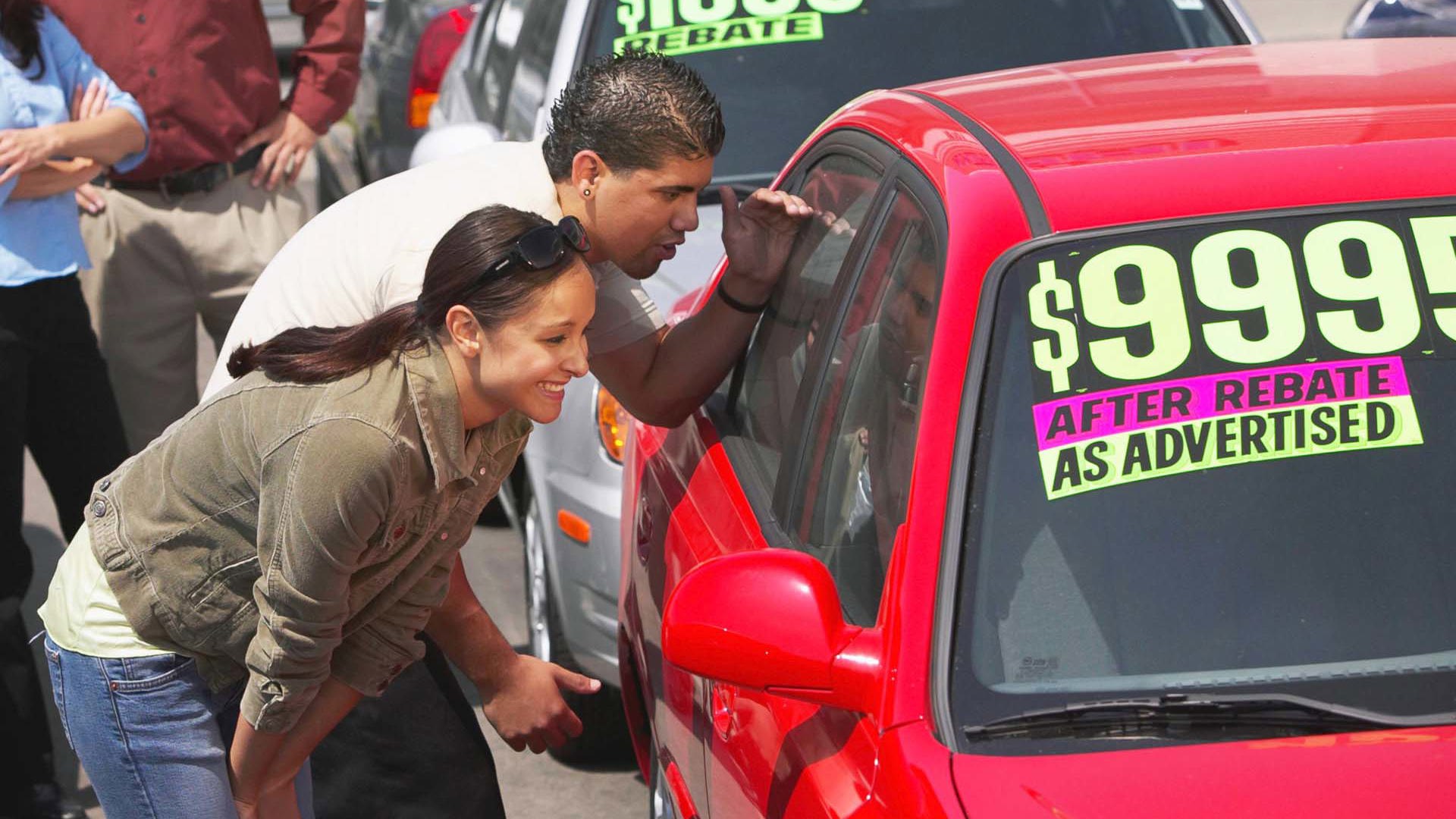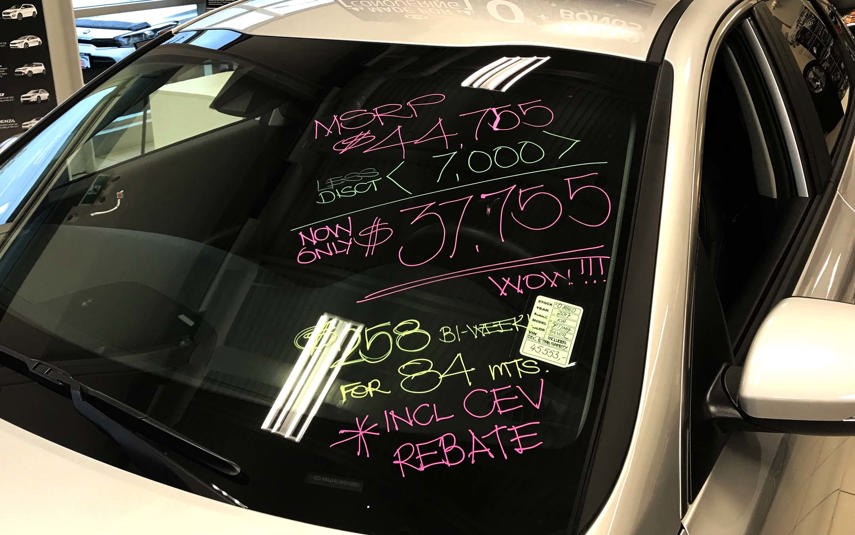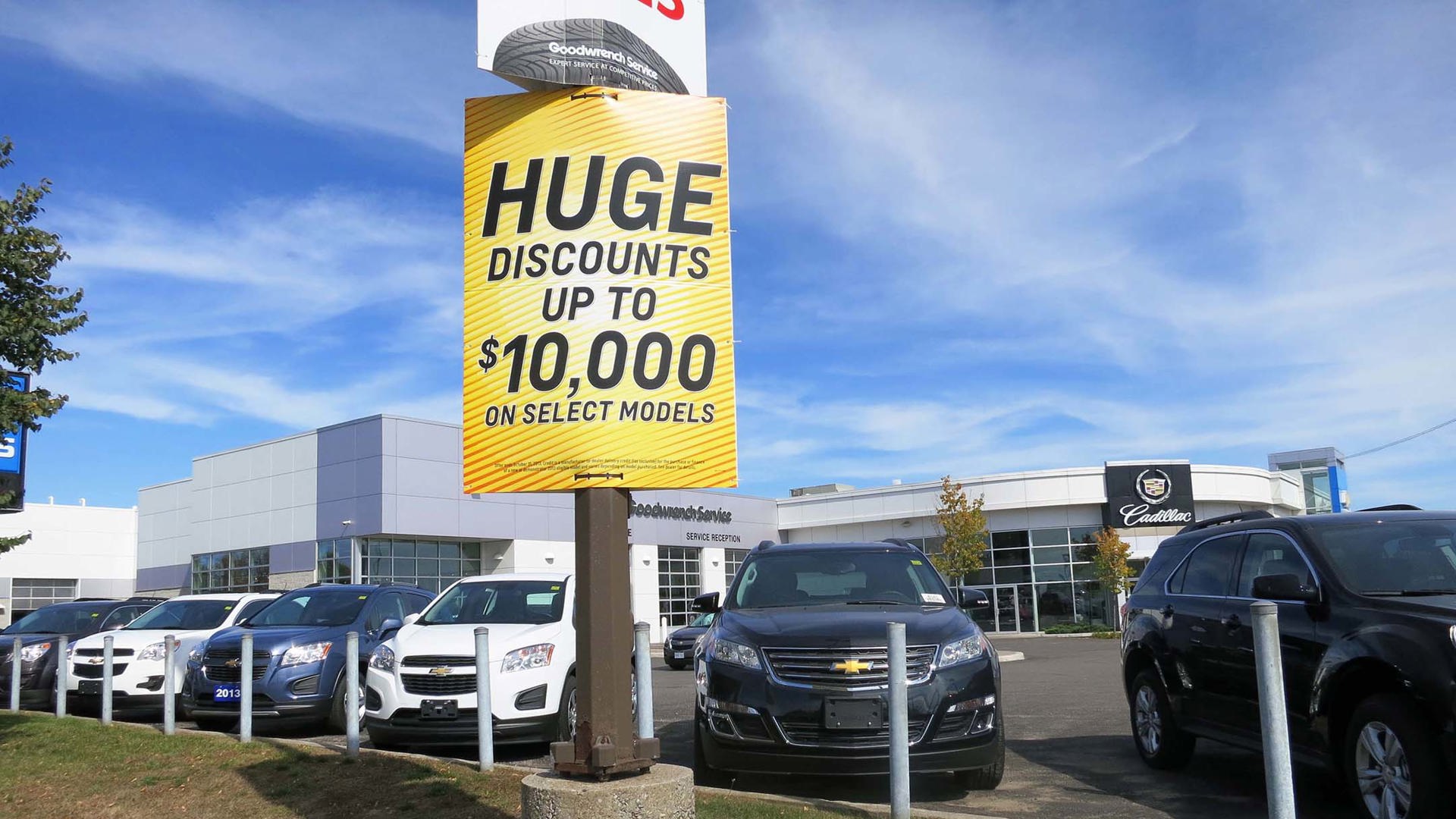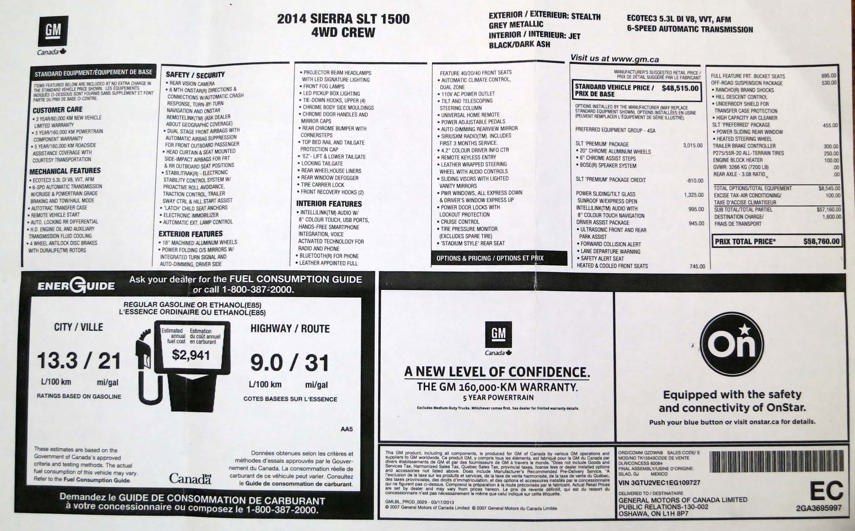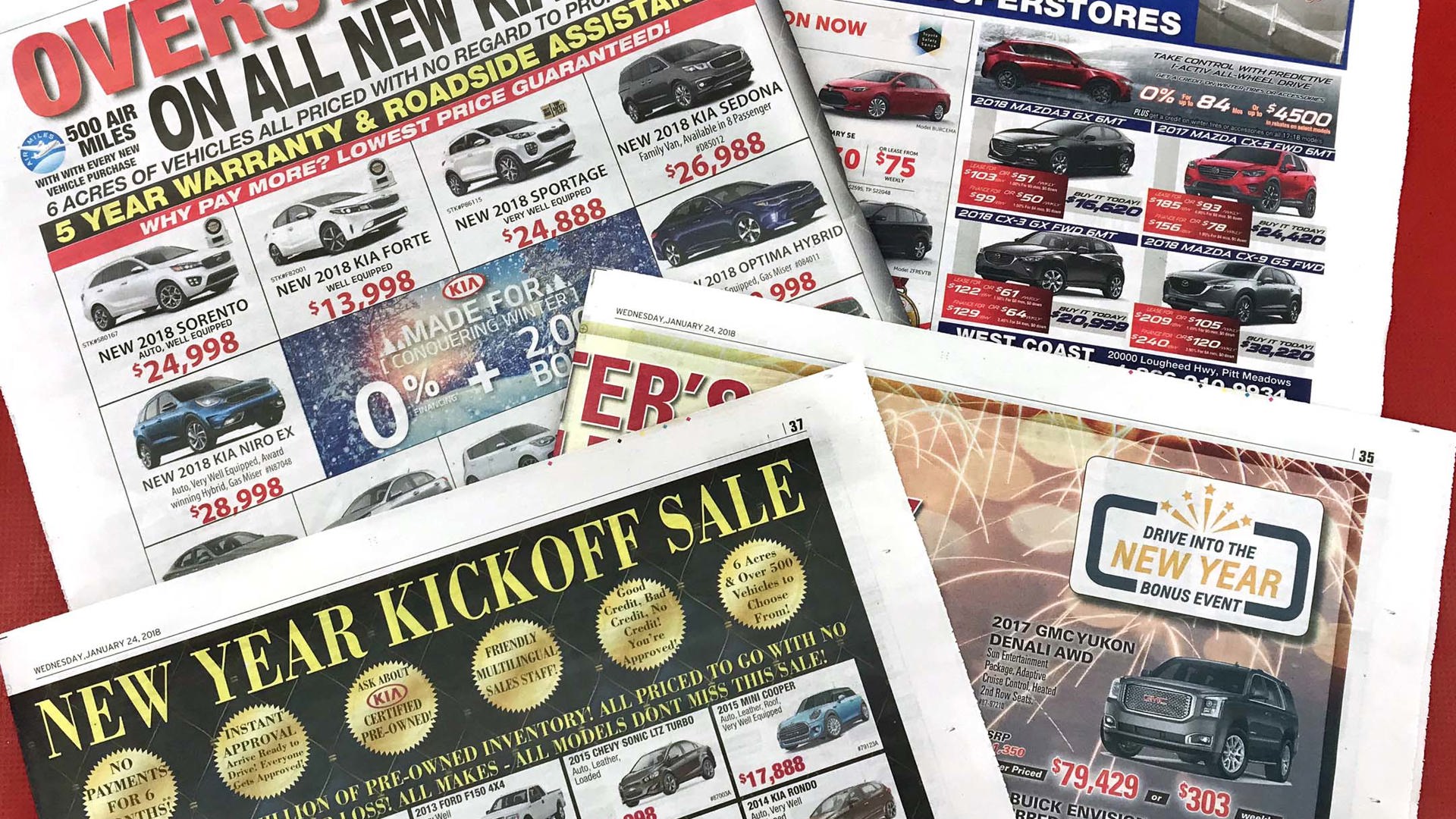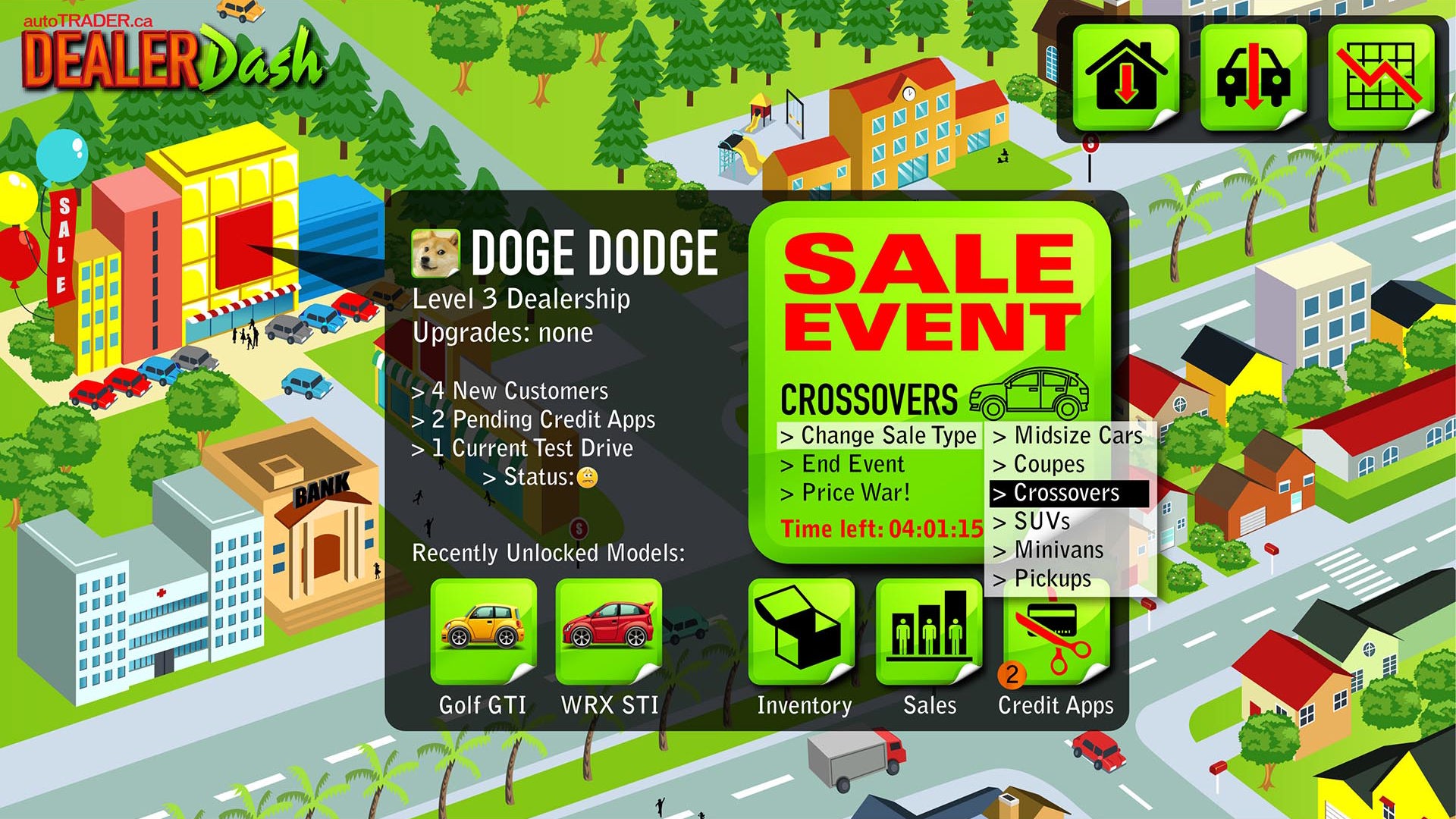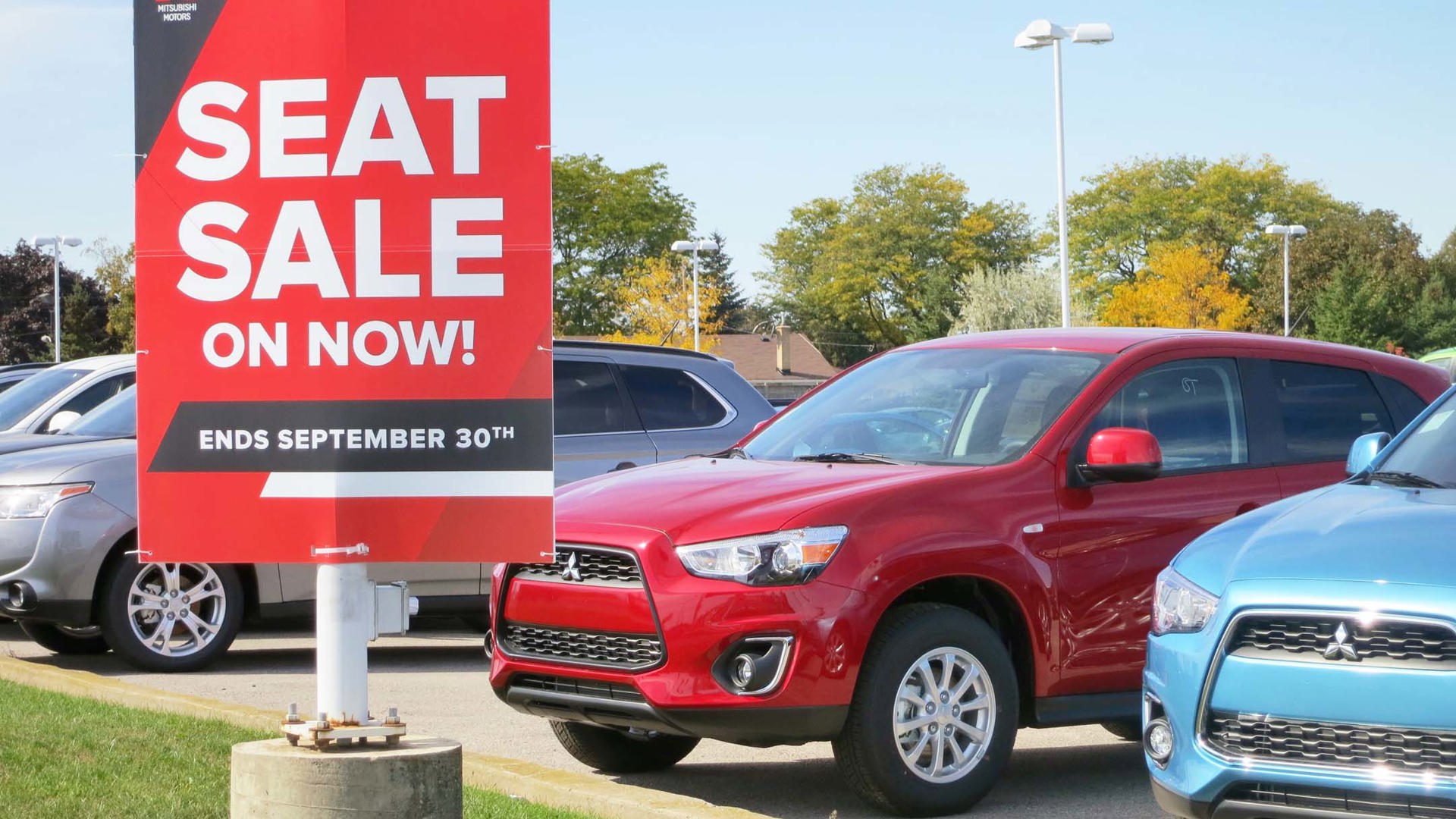Buy a loaf of bread, and the price you see is the price you pay. We sure wish cars were that simple. We’ve rounded up some of the pricing terms you may hear when you’re looking for a new vehicle.
MSRP
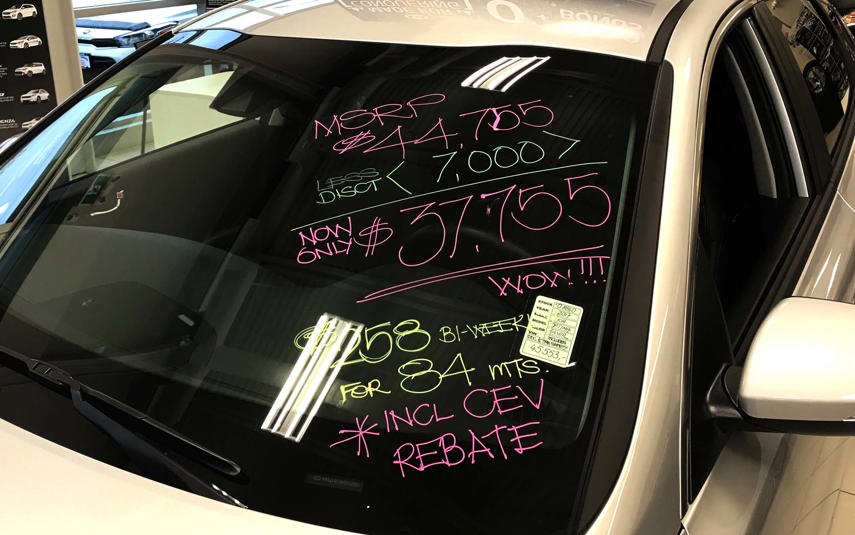
It stands for Manufacturer’s Suggested Retail Price. Just as it sounds, it’s what the automaker recommends the car should cost.
A bit of background: Other than a few exceptions, such as Genesis and Tesla, automakers don’t sell their vehicles to consumers. Instead, they sell them to their franchised dealers, who in turn retail them to you. The dealer is bound by federal and provincial retail laws, and is expected to follow the automaker’s standards for the store, but in almost all cases, you’re buying your vehicle from an independent retailer.
The MSRP is the price of the car itself. It doesn’t include freight or PDI (pre-delivery inspection), taxes, any applicable environmental levies, or dealer fees. It also doesn’t include any interest or associated fees you’ll pay if you opt for factory or dealer financing.
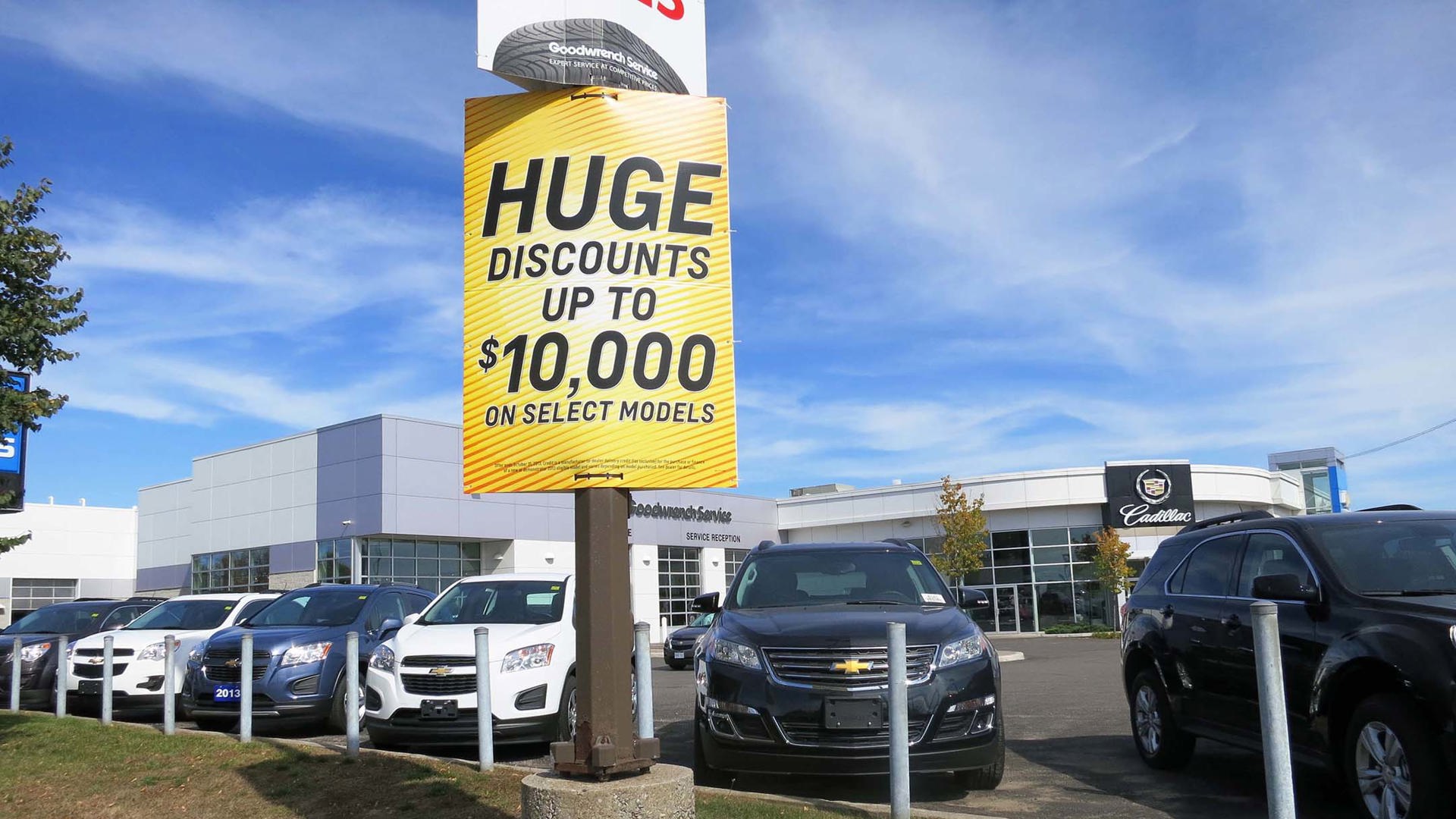
An auto manufacturer can advertise the lowest price for a vehicle model range – Ford can say the MSRP on a 2019 F-150 starts at $31,799, for example, even though the trim level you want costs twice that much. However, if you’re looking at a specific new vehicle on the lot, its window sticker has to show the price of its trim level and/or every factory-installed option it has, plus its destination charge.
As the name implies, the MSRP is a suggested retail price, and dealers aren’t required to stick to it. If they deviate, it’s usually in your favour – you’ve probably seen ads that say, “Dealers may sell for less.” However, if it’s a very desirable model and there aren’t many available, don’t be surprised if the dealer asks for more than MSRP.
All-in Price
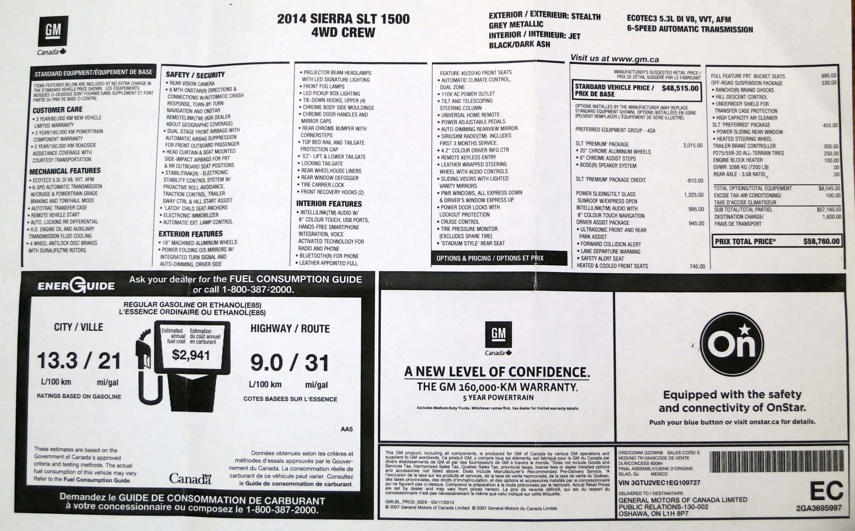
In Alberta, Manitoba, Ontario, Quebec, and Saskatchewan, dealers must show “all-in” pricing when they advertise a vehicle, which includes most of the dealer and manufacturer fees you have to pay to take it home with you. British Columbia also requires dealers to disclose all fees, but they can either advertise an all-in price, or show the dealer fees separately.
In those provinces, dealers must disclose everything up front in their advertising (you’re on your own in other provinces and territories), but in addition, Quebec requires all-in prices on all advertising, including ads run by the automakers themselves.
All-in applies wherever the dealer advertises, whether it’s television, radio, print, online, at the dealership, or on the vehicle.
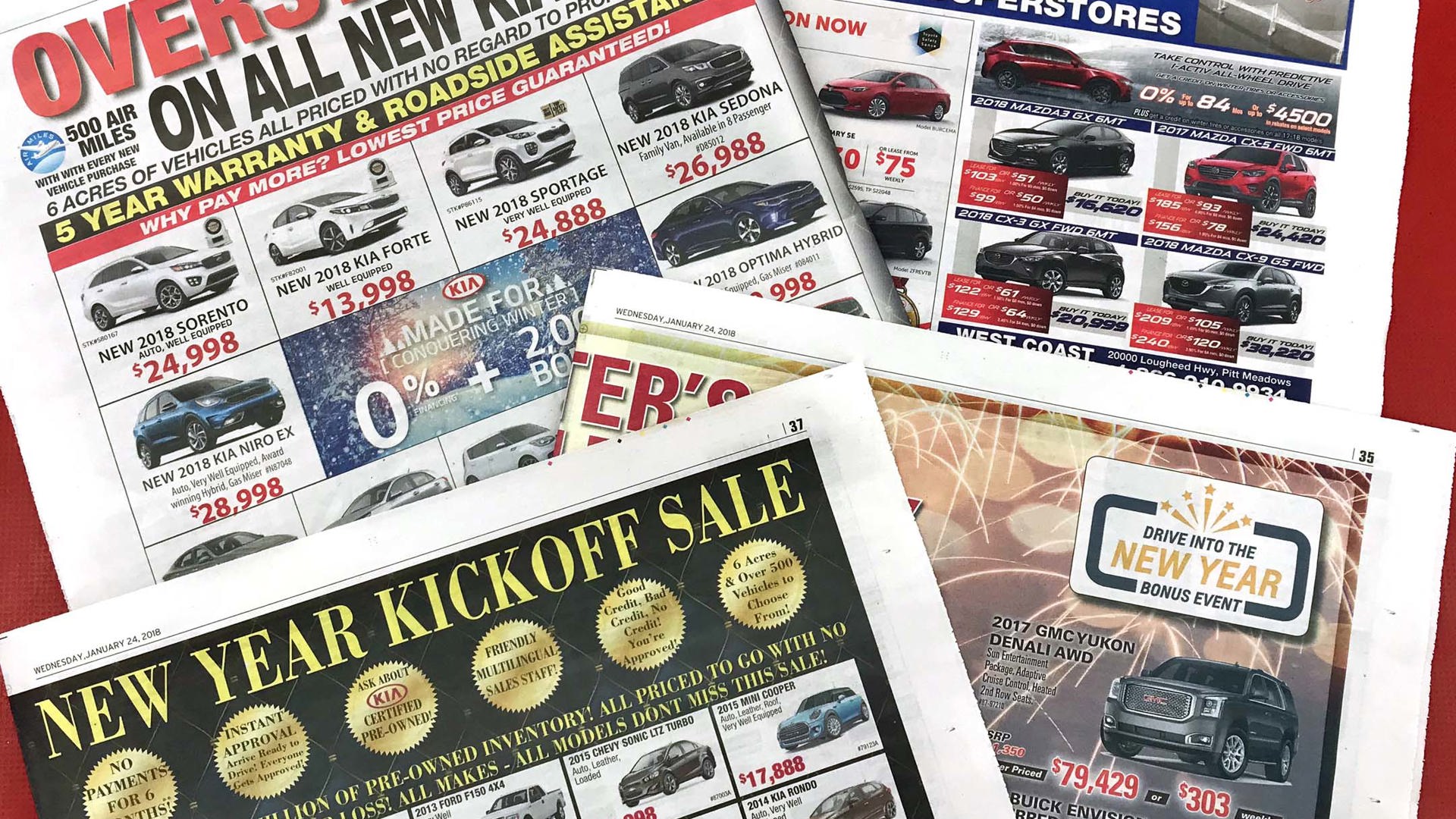
An all-in advertised price will include such things as options, any accessories attached to the vehicle, some environmental levies, any extra warranty, fuel, freight and PDI, dealer fees, any provincial regulatory fees, and any extras the dealer might have added, such as security etching or nitrogen tire fill. The price also includes any factory-to-customer or dealer-to-customer discounts or incentives.
However, the all-in price does not have to include the sales tax, licencing (the cost of the plate and registration itself; any fee the dealer charges for doing it has to be included in all-in), any trade-in, or any costs associated with vehicle financing – and it usually doesn’t.
Invoice Price

As we mentioned earlier, automakers sell vehicles to their franchised dealers, who in turn retail them to you. The invoice price is the basic charge for the dealer to buy the vehicle from the manufacturer. From here, just as with any other retail product, the dealer can charge more than the invoice price, to cover the cost of running the dealership and to earn a profit.
Dealer invoice prices used to be shrouded in secrecy, but thanks to the Internet, they’re now fairly easy to uncover. However, even if you do find an invoice price, it’s not really a big deal, because that’s not the dealer’s most important one. To really do business, dealers use…
Dealer Cost
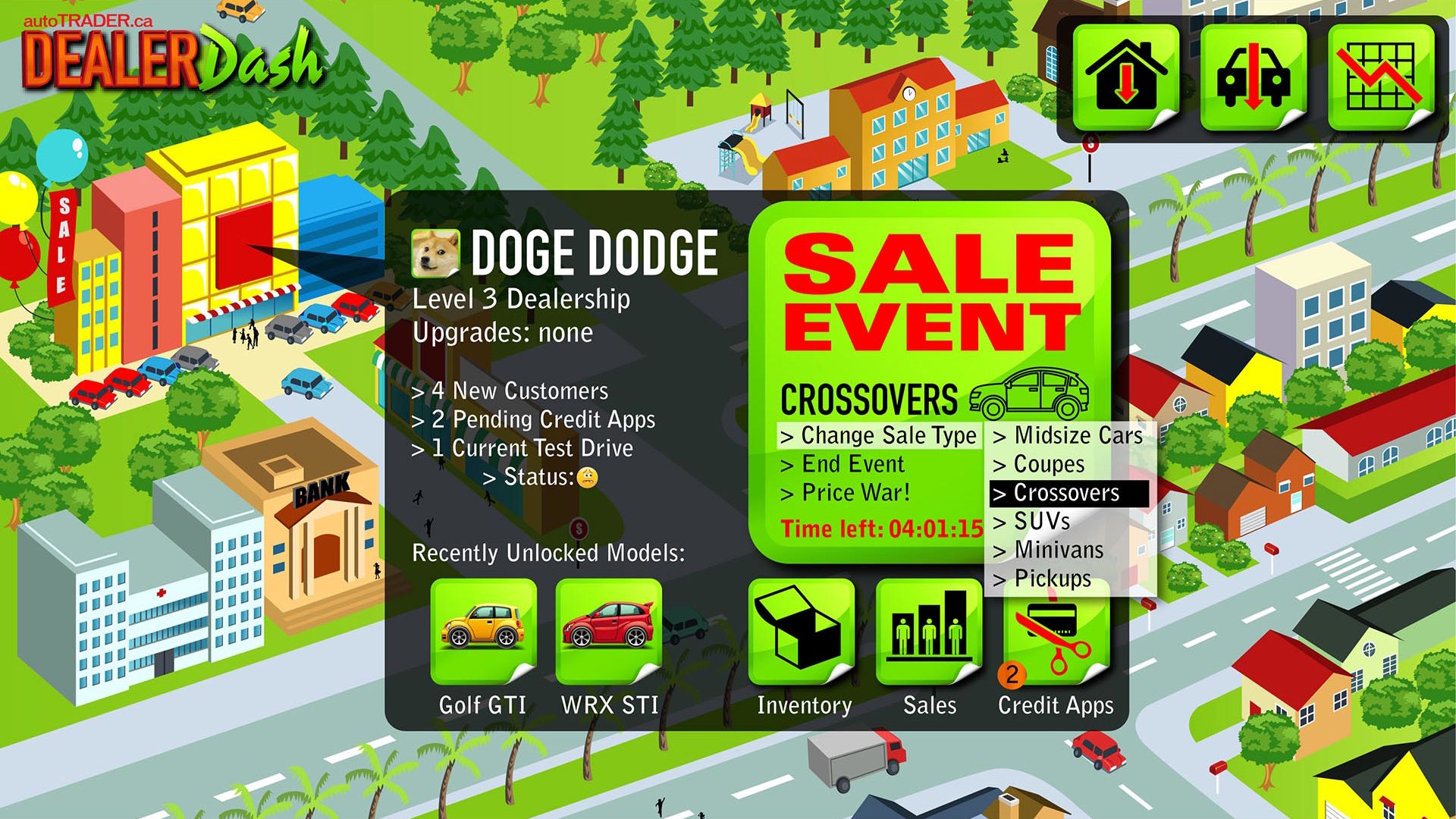
This is the one you won’t see, because it’s the vehicle’s true cost from the automaker to the dealer. This is the store’s actual starting point for profit and negotiation.
Automakers usually factor in a discount for their dealers, primarily to cover commissions, salaries, and business overhead, known as the holdback. It’s usually between about 1 to 3 percent of the car’s MSRP, and is subtracted from the invoice price.
There can also be factory-to-dealer rebates, known as the dealer allowance, which can be used as incentives for dealers to sell more cars, or to help bring the price down for slower-selling models. While it will depend on the automaker and the vehicle, the dealer cost can be hundreds or even thousands less than the invoice price.
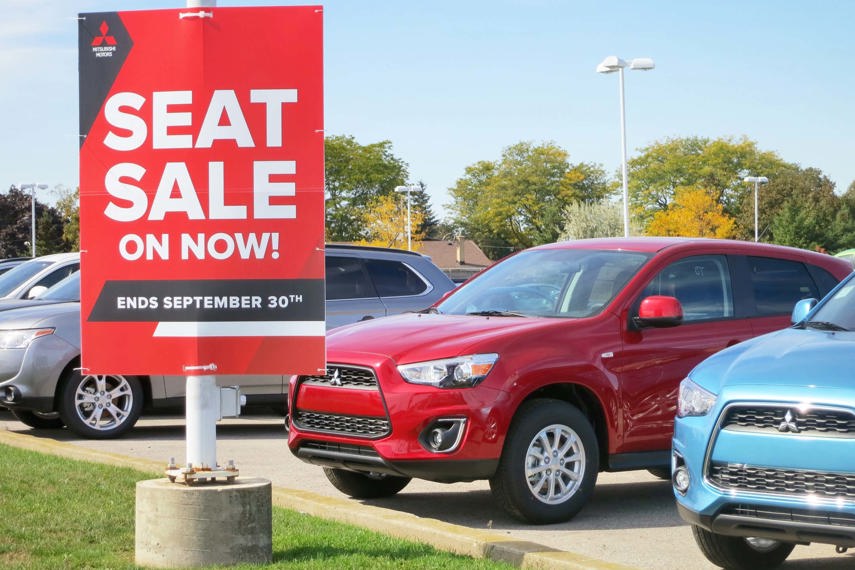
The money that gets knocked off the invoice price to arrive at the dealer cost can be turned into profit for the dealer, or wiggle room for negotiation with the customer. If you know the invoice price for the car you want (and the dealer may show it to you if you ask), you can come up with a “rough guesstimate” of what the dealer’s actually got into it, and go from there.
Some third-party websites will offer to sell you an invoice price or even the dealer cost, but they’re pretty much going on “guesstimate” too – and chances are they’re selling your contact information and your interest in a particular vehicle to a dealer on top of it. Keep the cash in your pocket to put a tank of gas in your new ride instead.
